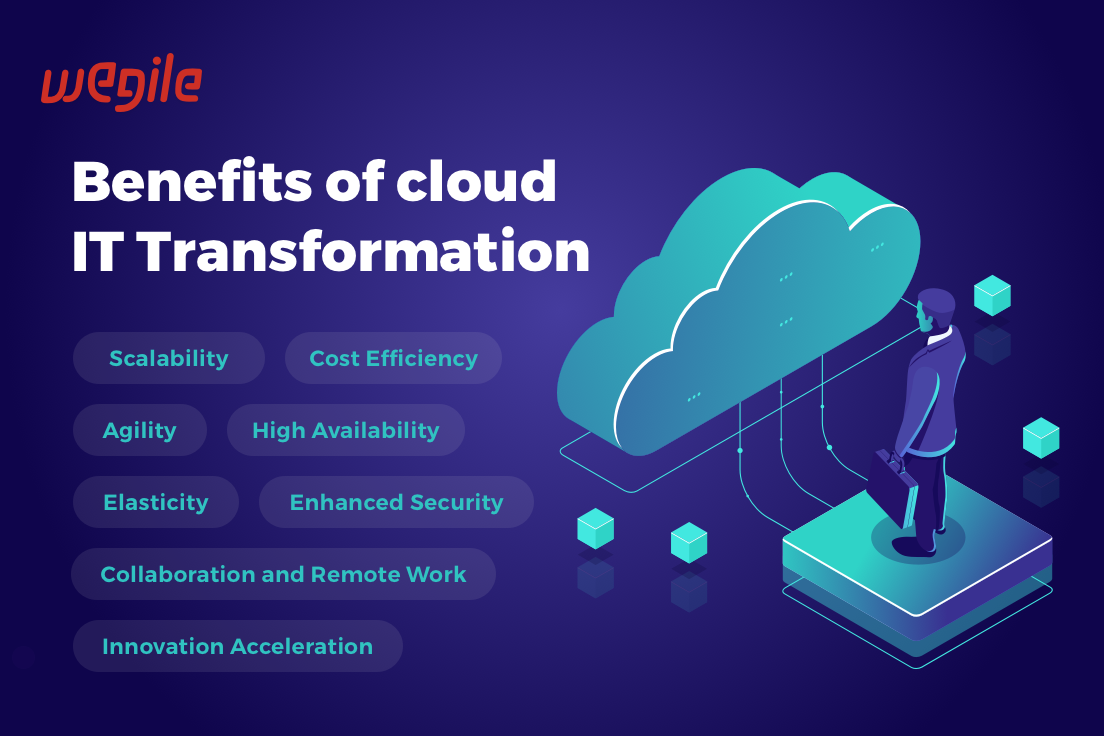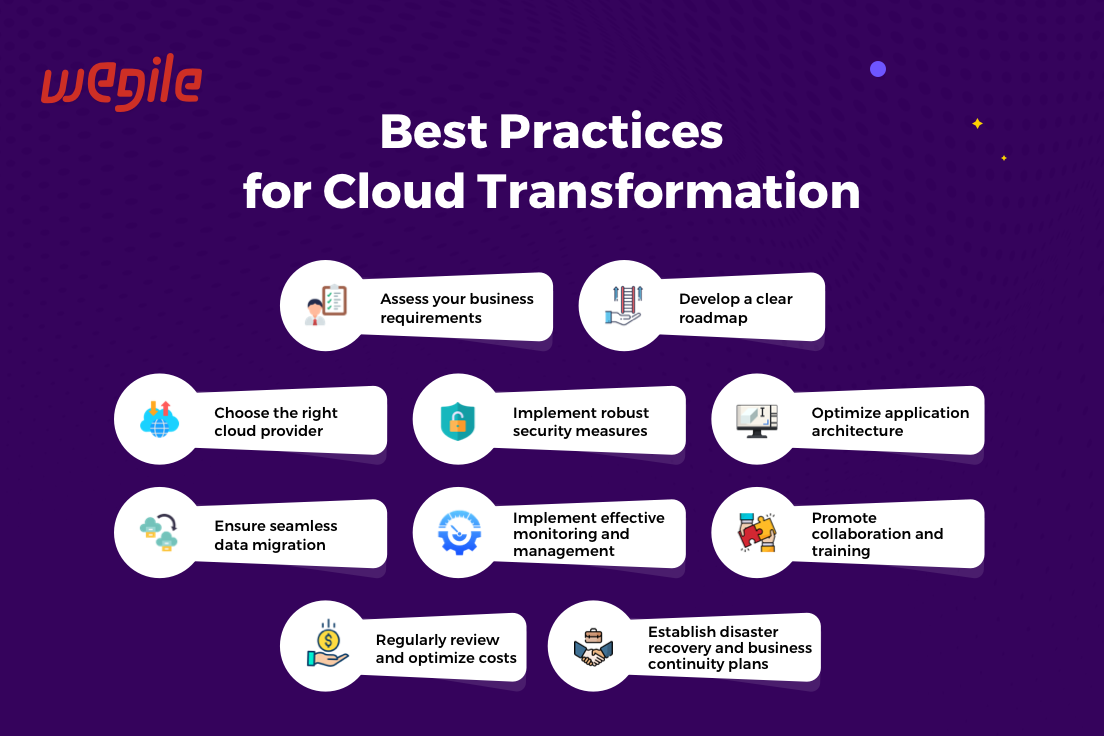The adoption of a cloud transformation strategy is a contemporary approach to managing IT infrastructure, which is changing the way organizations manage their technology. It’s no longer limited to traditional methods like server-based architecture or client-server models, as cloud technology breaks away from these constraints and offers more flexibility and scalability for businesses across industries. With a comprehensive cloud transformation strategy, organizations can shape their own future by taking advantage of improved agility, cost savings, and efficiency gains that come with moving to the cloud. But what is “cloud transformation?” In its simplest form, it means transitioning existing mission-critical applications into an environment where they are hosted in the public cloud instead of on-premise hardware or private clouds.
This requires a well-thought-out plan which takes into account all data center dynamics, such as total cost considerations (TCO), workload profiles analyzed business requirements due diligence initiatives before committing any resources – human capital costs being one less visible element in this process; starting off right is key! From there, gradually implementing processes designed around desired outcomes & influence long-term competitive advantages must also be taken into consideration!
To understand the future of Cloud Computing, take a look at our blog: The Future Of Cloud Computing: What's Next?

At Wegile, our priority is to equip you with top-quality insights on cloud transformation. It's important for you to understand the benefits of cloud transformation strategies. Here are some advantages you can expect
Cloud transformation enables organizations to effortlessly scale their resources up or down, allowing them to meet varying demands and optimize resource allocation.
With the cloud, organizations can reduce capital expenditure on hardware and infrastructure, as they only pay for the resources they use. This eliminates the need for costly upfront investments and enables cost optimization through flexible pricing models.
Cloud transformation empowers businesses to rapidly deploy new applications, services, and updates across their entire infrastructure, enabling faster time-to-market and improved responsiveness to changing market conditions.
Through redundant infrastructure and automatic failover mechanisms provided by cloud service providers, organizations can achieve enhanced system availability, minimizing downtime and ensuring continuous operations even in the face of hardware failures or disasters.
The ability to dynamically adjust resource allocation based on demand is a major benefit of cloud transformation. Organizations can seamlessly scale their computing power, storage capacity, and network bandwidth to handle peak workloads efficiently while avoiding over-provisioning during periods of low activity.
Properly designed cloud environments offer advanced security measures such as encryption at rest and in transit, identity management systems, access controls, regular security updates, and compliance certifications. This helps organizations improve their overall security posture compared to traditional on-premises solutions.
Cloud technologies facilitate seamless collaboration among geographically dispersed teams by providing centralized access to shared files, real-time co-authoring capabilities, video conferencing tools, and remote desktops that allow employees to work from anywhere with internet connectivity.
By leveraging cloud-native technologies such as containers and serverless computing platforms, organizations can iterate quickly on ideas without worrying about underlying infrastructure complexities. This fosters a culture of innovation by enabling experimentation, rapid prototyping, and faster time-to-value for new services and applications.

Struggling to figure out the best way to approach cloud transformation? Well, look no further than our blog section: Cloud transformation best practices. Being the top industry expert and thought leader; Wegile is committed to providing thoughtful insights into best practices for cloud transformation for successful implementations of cloud technology.
Cloud transformation best practices begin with assessing your business requirements; conduct a comprehensive analysis of your organization's current infrastructure, applications, and data to determine your cloud transformation strategy's specific goals and needs.
Define a well-defined plan that outlines the steps needed to migrate to the cloud. This should include timelines, objectives, resource allocation, and potential risks.
Assess various cloud providers according to their product offerings, pricing plans, security protocols, performance metrics, and dependability. Opt for the provider that is most aligned with your needs making it one of the cloud transformations’ best practices.
Prioritize security throughout the entire cloud transformation process. Implement robust access controls, encryption mechanisms, and regular vulnerability assessments to safeguard sensitive data.
Redesign or refactor applications to take full advantage of cloud-native features and capabilities. Leverage microservices architecture, containerization technologies like Docker or Kubernetes and serverless computing models for improved scalability and flexibility.
Develop a data migration plan that minimizes downtime and ensures data integrity during the transition process. Consider using tools and techniques like database replication or ETL (Extract Transform Load) processes to facilitate smooth migration.
Deploy robust monitoring tools to track performance metrics, resource utilization, and user experience within the cloud environment. Set up automated alerts for proactive issue identification and resolution.
Encourage collaboration between IT teams and other stakeholders involved in the cloud transformation process. Provide comprehensive training programs to equip employees with the necessary skills required to operate effectively in the new cloud environment.
Continuously monitor resource usage patterns to identify areas of optimization within your cloud infrastructure. Utilize cost management tools provided by your chosen provider to optimize spending without sacrificing performance.
Develop robust disaster recovery and business continuity strategies to minimize the impact of unforeseen events. Regularly test these plans to ensure they are effective and updated.
Remember, each organization's cloud transformation strategy may differ based on unique requirements. It is crucial to regularly evaluate and adapt your approach to leverage new technologies and follow the cloud transformation best practices that suits you well.
Organizations today understand the significance of cloud transformation strategy in achieving their goals and staying competitive. It is crucial to acknowledge that each organization’s journey is unique, and its cloud transformation strategy should align with its specific requirements. Regular evaluation and adaptation are key to leveraging new technologies and following the best practices that suit them best.
By embracing cloud transformation, businesses can unlock a multitude of benefits such as increased scalability, improved agility, enhanced security, and cost optimization. With careful planning and implementation of cloud transformation best practices and the help of Wegile, organizations can pave the way for long-term success in the ever-evolving digital landscape. Contact us today!


 Browse Our Services
Browse Our Services
